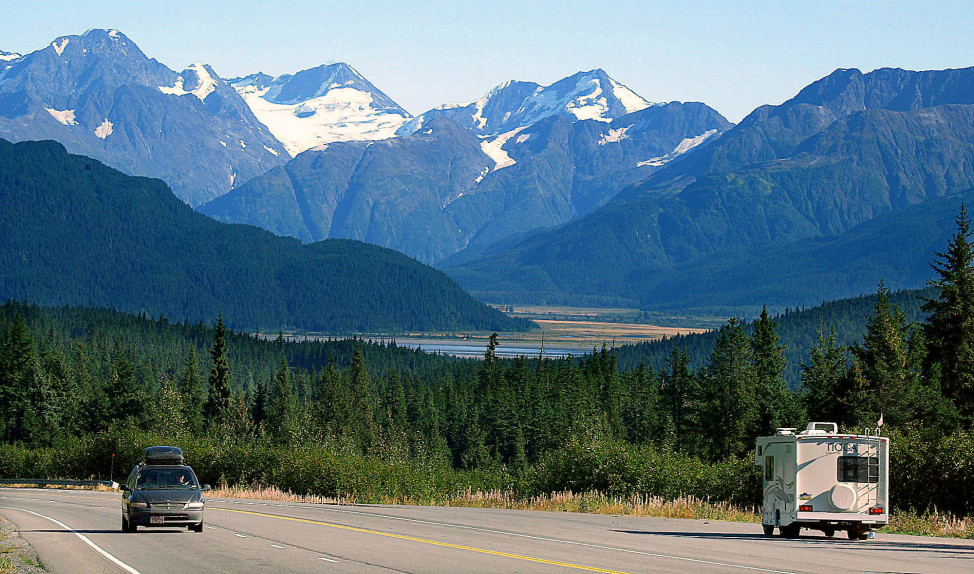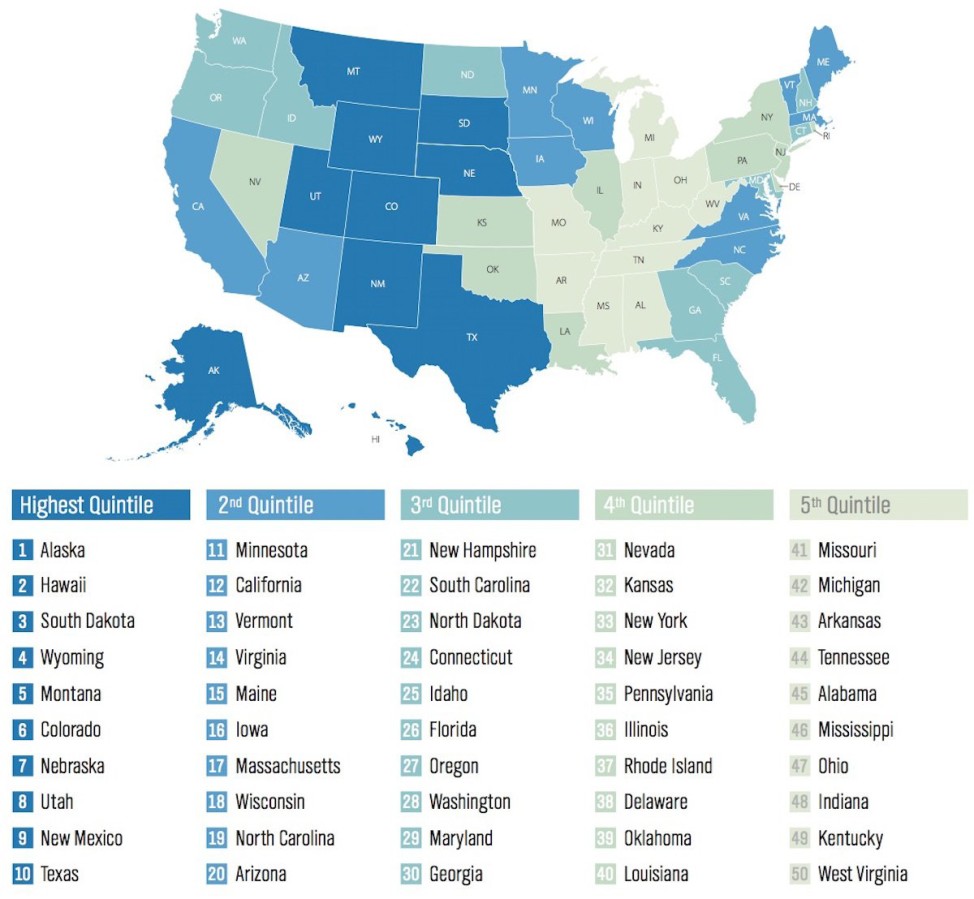
(File) Vehicles drive through Turnagain Pass on the Kenai Peninsula in Alaska, recently designated as America’s happiest state. (AP Photo)
America’s happiest state receives annual snowfalls of 300 inches in some areas. On the other hand, the summer sun can glow there for up to 21 hours and high temperatures are in the 60s and 70s (15-21 degrees Celsius).
A new 2014 Gallup-Healthways Well-Being index suggests Alaska is home to the happiest Americans, followed by Hawaii, South Dakota, Wyoming, and Montana.
Alaskans were found to exercise more, and they enjoy the lowest rates of cholesterol, diabetes and stress in the nation.
“Good emotional health, good physical health and good exercise,” said Dan Witters, research director of the Gallup-Healthways Well-Being Index. “That lays a very good foundation for Alaska as far as its well-being is concerned.”
Intellectual stimulation also plays a key role in happiness.
“Inside Alaska, 72 percent of Alaska residents agree that they learn something new or interesting every day, which leads a real buoyancy to well-being,” Witters added.
The findings are based on more than 176,000 interviews with U.S. adults in all 50 states conducted in 2014. The survey probed several aspects of well-being, including health, finances, community, whether they like what they do each day, and whether they have supportive and loving relationships.
Although Alaska has been in the survey’s top 10 four times in seven years, 2014 was the first time the state topped the rankings. Witters says states that rank high in well-being do share some characteristics.
“In high well-being states, you’ll see people who are more likely to be getting to the dentist and taking care of their teeth, you’ll also see better exercise habits and you’ll see better produce consumption, not just eating more produce but making it easy to get,” he said, “and having safe places to exercise, not just exercising but making it easy and safe…and having leaders that make you enthusiastic about the future.”
The outlook isn’t as optimistic in Kentucky and West Virginia, which report the lowest well-being in the nation. The two states have ranked 49th and 50th for six straight years.
West Virginia is the least educated state in the nation, according to the U.S. Census Bureau’s American Community Survey; 18.9% of adults 25 or older had a college degree in 2013.
West Virginia and Kentucky have the highest rates of obesity, smoking, chronic disease and depression in the nation.
“When you have such high obesity and such high smoking rates and your disease burden is so high…and you don’t have anybody encouraging you to be healthy, that’s a hard hole to dig yourself out of,” Witters said.
Arkansas, Mississippi and Ohio also consistently rank low when it comes to well-being.
One of the surprise results of the survey was that North Dakota, which ranked first in well-being last year, fell to 23rd in 2014.
The state continues to thrive economically, triggering an influx of manufacturing, construction, production and transportation workers, all job types associated with low well-being.
“I think one good hypothesis for the decline has been the influx of thousands of workers into the state to accommodate the booming oil economy,” Witters said. “These are workers that are needed but they’re also workers that we know…don’t take very good care of themselves.”
As in previous years, Gallup found regional patterns of well-being in the United States.
People tend to have a higher sense of well-being in the Northern Plains and Mountain West, along with some Western states and pockets of the Northeast and Atlantic.
The lowest well-being states start in the South and move north through the industrial Midwest.
























They must have asked Alaskans if they were happy during the 21 hours of sunshine rather than the 300 inches of snow.
Is there a correlation between low population density states and happiness?
It might be useful to note here that the key point of this research quoted here is actually physical well being rather than their emotional state (which most people would associate with “happiness”) The source quoted here says: “research shows that high well-being closely relates to key health outcomes such as lower rates of healthcare utilization, workplace absenteeism and workplace performance, change in obesity status and new onset disease burden.” All of this could influence whether or not someone is happy, but I do not think it is accurate to say that well being described as a mostly physical state is the same thing as happiness as an emotional state. Healthy people have been known to commit suicide, for example.
Makes sense. but the others who just simply find ways to default this research aren’t from these states. Other than Hawaii, the rest of the top 10 happiest states are predominately white Republican states. Ooops, just went there. Can I take that back? Could I just simply backspace that remark? Oh no, my backspace isn’t working! Oh the agony!
You would think that Colorado would be the ‘happiest’ state now, with a severe case of the munchies! hehe, hoho, and HI-HI, very HI!
It is comfortable to live where there are a few people,
because you can avoid contacting with a lot of people and noise.
Also, you can feel free from anything when you are in wide space. So I live rural natural area.
It is said that when you feel stress, you are likely to get fat.
People in West Virginia may suffer steady stress. But of what??